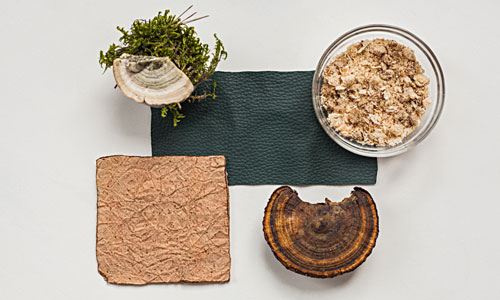Biotextiles in the Fashion Industry May 2022
Want more free featured content?
Subscribe to Insights in Brief

Despite growing consumer demand for ethical fashion products, leather, skin, feathers, and fur remain fashion staples. In addition to fueling the illegal wildlife trade, textile-linked animal husbandry contributes to deforestation and food and water consumption (the fashion industry produces 20% of industrial wastewater), while facility overcrowding creates repositories for zoonotic diseases. Most fake or "faux" clothes on the market use petroleum-based modacrylic and polyester. Treating and dyeing these products releases synthetic microfibers and toxic chemicals into the environment.
The burgeoning biobased-fashion market uses fungi and fruit waste (cellulose), algae (alginate), hemp, and silk proteins to develop mimicry textiles such as bioleather. In the lab, scientists have cultured biopolymers from microorganisms; grown fur from stem cells; and modified the properties, appearance, and texture of natural fibers to resemble animal textiles. Commercial biotextiles are seldom wholly biobased because plastics offer immediate strength and durability. Koba's faux fur, for example, comprises DuPont's corn biofuel waste and terephthalic acid. Hybrid products generate lower emissions but are not biodegradable and are difficult to recycle.
Implications
Biopolymer application in the textile industry will reduce production inputs, emissions, and reliance on toxic dyes. Although raw materials are readily available, however, current processing methods for biomass waste—a promising cellulose source—are suboptimal. Cellulose from fruits (for Piñatex by Ananas Anam) and renewable abacá stalks (for Banatex by Qwstion) can grow at high density, and companies that work directly with local harvesters have a competitive advantage; their ethical, sustainable, and transparent methods align with consumer values, which is a key consideration in the high-end-fashion industry. Textile companies that help mechanize processes and build capacity in agroforestry communities have the ability to specify their needs and revisit feedstock specifications, which is crucial given the lack of industry-wide quality standards. Biotechnology and stem-cell approaches are time-consuming, labor intensive, and poorly adapted to high-throughput production, so look for advances in additive manufacturing.
Although consumer values have changed dramatically in the past decade, and the majority of apparel company executives hope to manufacture products containing 50% biopolymers by 2025, mass producibility remains an industry driver. The number of biotextile companies increased fivefold between 2017 and 2019. Although this represents a small portion of the market, growth will only accelerate. Small companies that work with biopolymers are benefiting from global investments and partnerships with transnational companies such as H&M. In March 2022, the European Union announced its Strategy for Sustainable and Circular Textiles, which includes funding for the €2 billion public–private Circular Bio‑based Europe Joint Undertaking, a partnership that will develop biobased textiles.